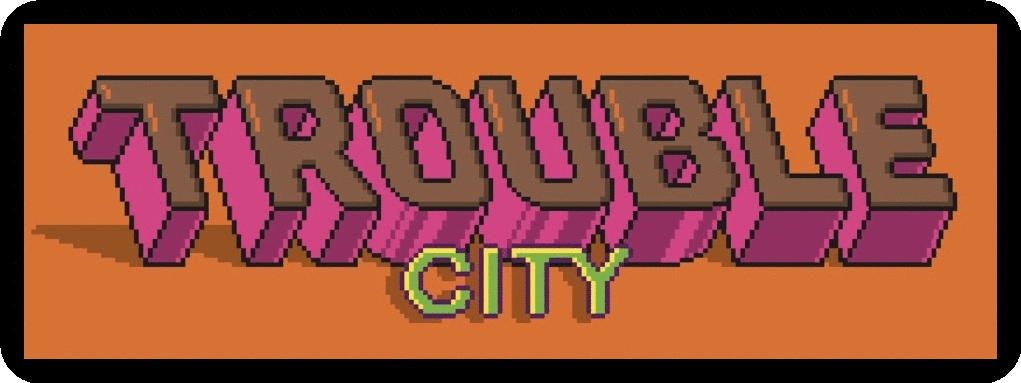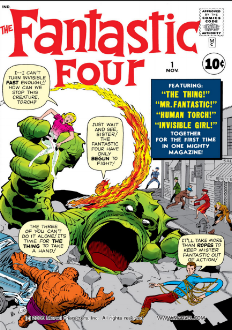Over the past few years, I've been looking back at the past 70+ years of Marvel Comics. Unlike DC Comics, Marvel has a long-running continuity and seldom reboots anything. Even then these "reboots" merely add to the story that is already there. For some readers, the task of reading decades worth of comics is quite daunting. Where do you even start? Well not to worry! I am here to point you in the right direction! Today, we're going to start with the first family of the Marvel Universe, the Fantastic Four. Mostly, because their series is on a hiatus for the time being, so there's an endpoint on what to catch up on. This list not only includes what I believe to be some of the best runs of the series, it also includes ones that you can probably skip (or at least be forewarned that they aren't that great). If you're looking to get ahold of copies of Fantastic Four, the majority of them can be found on Marvel Unlimited.
So buckle up True Believer, because here we go!
For the sake of clarity, listings are in chronological order.
Must Read: Stan Lee/Jack Kirby Run (Fantastic Four #1-102)
Harkening back to a day when Reed Richards went into action wearing sensible slacks.
Of course, Stan and Jack's work is essential, they're the creators of the Fantastic Four and the laid the majority of the groundwork for the series. However, no matter how classic these stories are, a lot of them haven't aged very well. Early tales are clunky, and Kirby had to refine his characters. But to start the character dynamics were great. When you compare it to super-hero books at the time when Fantastic Four burst on the scene in 1961, it was pabulum. What DC Comics was doing at the time were happy-go-lucky super-heroes whose adventures had no consequences, the stories often ended the way they started -- with the status quo restored. Plots were never serious, there was nothing to lose, and the hero always ended up on top 100% of the time. So to create characters who argued, and had real-world feelings (all be it hokey and dated by today's standard), there were interpersonal relationships between characters that actually evolved. From Lee & Kirby's run, you saw the Fantastic Four at their most progressive, something that had not been captured again until John Byrne took the reins. You saw Reed and Sue go from long-time sweethearts to husband and wife, to parents.
But not all the concepts were great, particularly when you again -- note the date of publication-- certain slang, awful gender roles, and even dated concepts. Particularly the treatment of the Invisible Girl, who was almost always portrayed as a damsel in distress. Although Fantastic Four #11 did a (never repeated) Q&A story that chastised fans for complaining about Sue being "useless" and pointing out the contrary, she was still relegated to the doting 1960s mother figure, too emotional and "feminine" to make any decisions. By today's standards, you read this (particularly since Marvel has moved into being more inclusive to female readers) that sort of writing -- as much as it is a product of its time -- is tough to swallow without at least groaning.
Lee and Kirby also came up with a rogues gallery for the Fantastic Four most of whom have endured the test of time. Doctor Doom, the Puppet Master, Galactus, the Mad Thinker, Diablo, Dragon Man, Annihilus, Blastaar, and so on. No other creators on Fantastic Four have created villains that have been this long lasting ever since. However not all of the characters were winners, they had plenty of duds like the Monocle, the Nega-Man, and Gregory Gideon... But they were far and few.
Then there was the supporting cast, between reviving the Sub-Mariner, to introducing the Silver Surfer, the Black Panther and Wyatt Wingfoot the Fantastic Four used to be a wellspring of new characters.
Black Bolt does his impression of a TV antenna wrapped in tinfoil.
You also can't mention Lee and Kirby's run on Fantastic Four without at least talking about the Inhumans. As iconic as these characters are, I honestly think this is a low point of the series. Clearly, as Kirby was getting more creative control by this point, and if you know Kirby's body of work you know what I'm talking about. Jack Kirby was a great artist, one of the most iconic and best of his era, but as a writer -- as sacrilegious as this is going to sound -- wasn't that great. (Those of you who are saying "I thought Stan Lee was the writer!" which he was... sorta... Stan came up with the plots, Kirby usually fleshed out the stories and Stan was left to fill in the dialogue) The Inhumans are one of a long line of Kirby's derivative work. It's all the same. Always involving genetics or cosmic space gods. The Eternals, the New Gods, the High Evolutionary's New Men, the Asgardians... Even if you go back to the 1940s and see his work on Hurricane... Kirby had an obsession with god-like characters that are the product of eugenics. It's tired. You read enough Kirby writing and you start to roll your eyes if you actually read it critically enough. He's not a great writer by any means. Thankfully Kirby's other tropes -- reviving wartime characters and inserting a group of teenagers who get in on the action -- were very minimal in this series, unlike his other works where it was almost constant.
By the end of their run, you're almost worn out about stories about the Inhumans, or androids. The end of that entire run was incredibly weak as Lee and Kirby's detonating professional relationship is very apparent.
Sidetrack: Strange Tales #101-134
This issue featured a back-up story involving a free spirited robot and it's struggle to get equal pay compared to its human colleagues.
In the early days, Marvel was shifting away from the horror and science fiction anthology titles that sustained them in the 1950s. With superheroes coming back into vogue they started slipping characters into these books. In Strange Tales, they did a number of solo stories involving the Human Torch.
For the most part, it was rife with Cold War villains and pathetically weak foes. There was also an awful subplot about the Torch keeping his identity a secret that was, thankfully short lived.
It introduced lame villains like the laughably bad Asbestos Man, the Rabble Rouser, and the Acrobat. However, there were a few diamonds in the rough, like the Wizard, the Trapster (then laughably known as Paste Pot-Pete) the Eel and Plantman. This run was also a "test" to see if anyone would be interested in new stories about Captain America. In that story, the Torch fights the Acrobat, who had disguised himself as Cap in order to rob a car show.
As the run of Torch stories was winding down the Thing became a regular character appearing. This was a low point with constant appearances by the Puppet Master and Mad Thinker. The pair also met the Beatles. Honestly, unless you like camp, skip these stories.
Skip It: Later Stan Lee/Archie Goodwin Run (Fantastic Four #103-118)
Without Jack Kirby, the Fantastic Four took a heavy blow. Also, it was the late 60's/early 70's and I feel this is the period in which Stan Lee hit the glass ceiling of his creativity. This run shows that Lee ran out of any particularly good ideas. It was so bad that at one point, Lee recycled an unfinished story that he did with Jack Kirby that he had initially rejected. Incidentally, this was about the same time that Jack started working at DC Comics. However, these stories were not that great, featuring two plot lines where members of the Fantastic Four go bad (the Thing and Mr. Fantastic). It also gave us a rather underwhelming foe, the Overmind, who was apparently supposed to be a Galactus level threat that fell kind of flat.
If anything, this run is notable for the end of the Human Torch's relationship with Crystal, the first hint that Franklin Richards had powers. There is also a forgettable moment where the Fantastic Four are forced to work with Doctor Doom for the first time.
Skip It: Stan Lee's Second Run (Fantastic Four #120-125)
FEAR THE POWER OF MY LASER TRUSS! THE MOST POWERFUL WEAPON OF THE NEGA-MAN!
After a lukewarm one-off story by Roy Thomas that commentated on racial segregation in South Africa, Stan Lee came back to writing Fantastic Four. Unfortunately, he was still striking out. He wrote an uninspiring return of Galactus, that is one of the weakest Galactus stories ever wherein Galactus has a new herald called the Air-Walker (actually a robot) to try and force the Silver Surfer back into serving him. He then followed it up with the return of the Creature of the Lost Lagoon, one of the weakest (and obviously ripped off) characters he and Kirby created.
Skim It: Roy Thomas' run (Fantastic Four #126-137)
Roy Thomas can be best described as the guy who picked up the ball when Stan just couldn't come up with great ideas anymore. Thomas has done some great work, but his first run on Fantastic Four was suffering from the same lack of imagination that the Post-Jack Kirby comics suffered from. However, there are some minor plus points.
The first being that Roy tried to do something with the Invisible Girl that didn't involve her being the doting female and frequent damsel in distress. To this end, he actually created an interesting plot wherein Sue had grown tired of being on the sidelines to the point where she took her son and left her husband.
This leads to the second plot point that is iconic, if not a stellar read: The relationship between Crystal to Quicksilver of the Avengers. This was the final nail in the coffin for any hope that the Torch and Crystal were going to get back together (for a long long time) and it also brought Medusa onto the team.
The run ends with a story that focuses on Thomas' obsession with the 1950s. The only revolutionary thing about that story was the fact that since it was published in the 70s it's twice as dated.
Coming Up on Must Reads....
I know things are looking dire when it comes to the Fantastic Four, but trust me things do get better. Next time we'll take a look at the Thing going solo, some beautiful art by George Perez, Reed Richards impotence, Franklin Richards weird Freudian moments, and a much needed breath of fresh air to the series by John Byrne.




